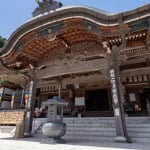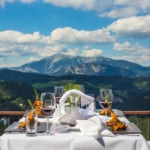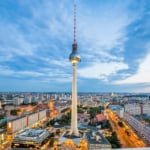Address: Lizhengmen St, Shuangqiao District, Chengde, Hebei, China
Official Website:http://www.bishushanzhuang.com.cn/
![[World Heritage] What Are the Chengde Mountain Resort and Outer Temples? | A Place Where Ethnic Cultures Coexist](https://skyticket.com/guide/wp-content/uploads/2025/03/1b7229cde8fcec30a7c20f6681082c5d-e1523876909965-1200x675.jpg)
[World Heritage] What Are the Chengde Mountain Resort and Outer Temples? | A Place Where Ethnic Cultures Coexist
Located about three hours by car or four hours by train northeast of Beijing, Chengde is home to a breathtaking imperial retreat. During the Qing Dynasty, the emperor chose this lush and nature-rich region to build the Chengde Mountain Resort, a grand summer retreat.
The Mountain Resort offers a serene atmosphere where you can immerse yourself in traditional Chinese culture. In contrast, the Outer Temples (Wai Ba Miao) surrounding the resort reflect the rich cultural heritage of ethnic minorities, showcasing influences from Tibetan Buddhism and Lamaism.
A remarkable site where Han Chinese traditions and ethnic cultures harmoniously coexist, Chengde was inscribed as a UNESCO World Heritage Site in 1994. In this guide, we will introduce you to the Chengde Mountain Resort and Outer Temples, highlighting their history, cultural significance, and must-see attractions.
table of contents
[x] close
[World Heritage] What Are the Chengde Mountain Resort and Outer Temples? | A Place Where Ethnic Cultures Coexist
Chengde’s Mountain Resort and the Outer Eight Temples

Chengde is located about 230 kilometers northeast of Beijing. Surrounded by mountains and flowing rivers, it has long been a perfect summer retreat due to its refreshing climate. In 1703, Emperor Kangxi of the Qing Dynasty initiated the construction of the Chengde Mountain Resort (Bishu Shanzhuang), which was completed 89 years later during the reign of Emperor Qianlong. Today, it stands as the world's largest existing imperial garden.
Emperor Kangxi, one of the most influential rulers of the Qing Dynasty, sought to solidify the northern frontier by fostering relations with Mongolian nobles. However, as Beijing was considered inauspicious, these nobles were reluctant to visit. To address this, Kangxi built the Chengde Mountain Resort, strategically located between Beijing and Mongolia, where he could conduct diplomatic meetings with northern ethnic groups.
Encircling the eastern and northern parts of the resort, the Outer Eight Temples (Wai Baimiao) were constructed between 1713 and 1780 under the Qing emperors. These temples, built in Tibetan Buddhist architectural style, reflect the Qing rulers' efforts to integrate and harmonize with Mongolian and Tibetan communities. Each temple boasts unique designs and vibrant colors, making them a remarkable cultural and religious landmark.
Access to Chengde
From Beijing, you can take a bus to Chengde, which takes around 3.5 hours. Once in Chengde, a taxi ride of about 15 minutes will bring you to the Mountain Resort of Chengde (Chengde Bishu Shanzhuang).
Alternatively, you can travel from Beijing to Chengde by train. This journey takes about 4.5 hours.
Recommended Attraction ①: Chengde Mountain Resort

The Chengde Mountain Resort (Chéngdé Bìshǔ Shānzhuāng) is the largest existing imperial garden in the world. The Chinese emperors spent nearly half of the year here, holding court with royal nobles and foreign envoys while conducting state affairs.
The resort is divided into two main areas:
● The Palace District, where the emperor carried out official duties, ceremonies, and daily life.
● The Scenic Area, which features lakes, plains, and mountains, alongside buildings modeled after famous architectural landmarks from different parts of China. The area’s serene valleys and lakeshores create a picturesque landscape.
One of Chengde Mountain Resort’s most distinctive features is its harmonious integration with nature. Unlike Beijing’s Forbidden City, the wooden structures in the Palace District are left unpainted, giving them a tranquil, Zen-like ambiance.
Additionally, the resort is home to "Rehe Spring" (Rèhé Quán), a thermal spring that never freezes in winter. Because of this, the resort was once called "Rehe Palace" (Rèhé Xínggōng). The hot springs flow into the Wulie River, which runs through Chengde, helping to create a lush, green environment throughout the area.
Recommended Highlight ②: Putuo Zongcheng Temple
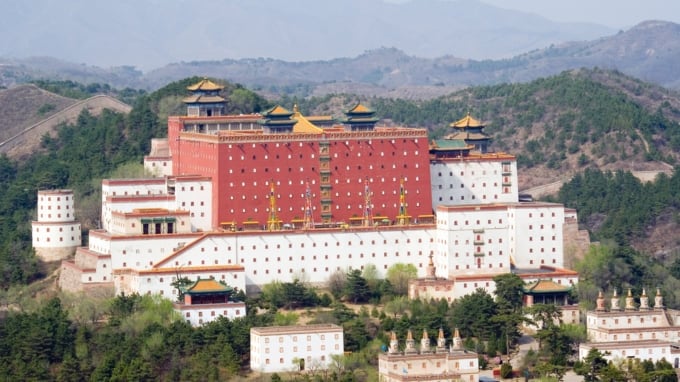
Among the Eight Outer Temples in Chengde, Putuo Zongcheng Temple is the largest in scale. It was built by Emperor Qianlong to celebrate his 60th birthday and his mother’s 80th birthday.
This temple is modeled after the Potala Palace in Lhasa, Tibet, earning it the nickname "Little Potala Palace." At its center stands the Grand Red Terrace (Dahongtai), a striking red square structure that rises 25 meters high. When viewed from above, this terrace forms the shape of the Chinese character "口" (mouth), with the Ten Thousand Dharma Return to One Hall (Wanfa Guiyi Hall) featuring a golden roof at its center.
Putuo Zongcheng Temple and the other Eight Outer Temples reflect the deep influence of Mongolian and Tibetan cultures. A visit to Chengde offers not only a glimpse into traditional Chinese heritage but also an opportunity to experience the rich cultures of China's ethnic minorities, making it a truly unique destination.
Important Travel Tips
To reach Chengde from Beijing, you can take a car, bus, or train. However, travel time can be long, and traffic congestion, especially by car or bus, may cause unexpected delays.
If you plan to visit Chengde on a day trip from Beijing, it is highly recommended to allow extra time in your schedule to avoid rushing through your visit.
◎ Summary
In this guide, we introduced the UNESCO World Heritage Site, "The Mountain Resort and Outlying Temples of Chengde." This imperial retreat, built by the Qing emperors, offers a unique blend of Chinese, Mongolian, and Tibetan cultures.
Chengde is an excellent destination for a day trip from Beijing. If you're staying in the capital, consider making the journey to explore this historically significant site. Don't miss the chance to experience its rich cultural and architectural heritage firsthand!
RELATED ARTICLES
REGIONS
CATEGORIES
FEATURED ON China
-

A must-see: The gorgeous neon-lit fountain show! Tourist attraction in Liuzhou, China
-
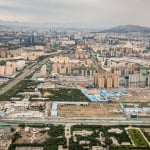
4 Recommended Tourist Attractions in Aksu, Xinjiang Uyghur Autonomous Region – A City Where the Uyghur People Live!
-
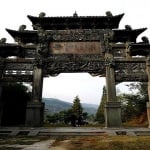
【World Heritage Site】What Are the Ancient Building Complexes of Wudang Mountains?|A Spot to Learn the Spirit of Taoism!
-
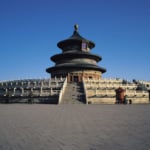
【World Heritage Site】What is the Temple of Heaven?|A place to pray to heaven!? Introducing the highlights!
-
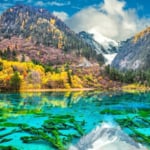
【World Heritage】What is Jiuzhaigou?|Introducing a mysterious world woven by forests and lakes!
MOST POPULAR ON China
-
 1
1Doha: Must-see Attractions in the Capital of Qatar
-
 2
2Toronto: 10 Things to do in this Picturesque Canadian City
-
 3
3Amarillo: A City Famous for It’s Amazing Canyons, Great History and Music
-
 4
4South Korea: Dazzling Scenery, Rich Culture and Fascinating History
-
 5
5Kuwait: A Country in Middle East Asia Famous for Hot Sand Dunes and Stunning Cityscape

